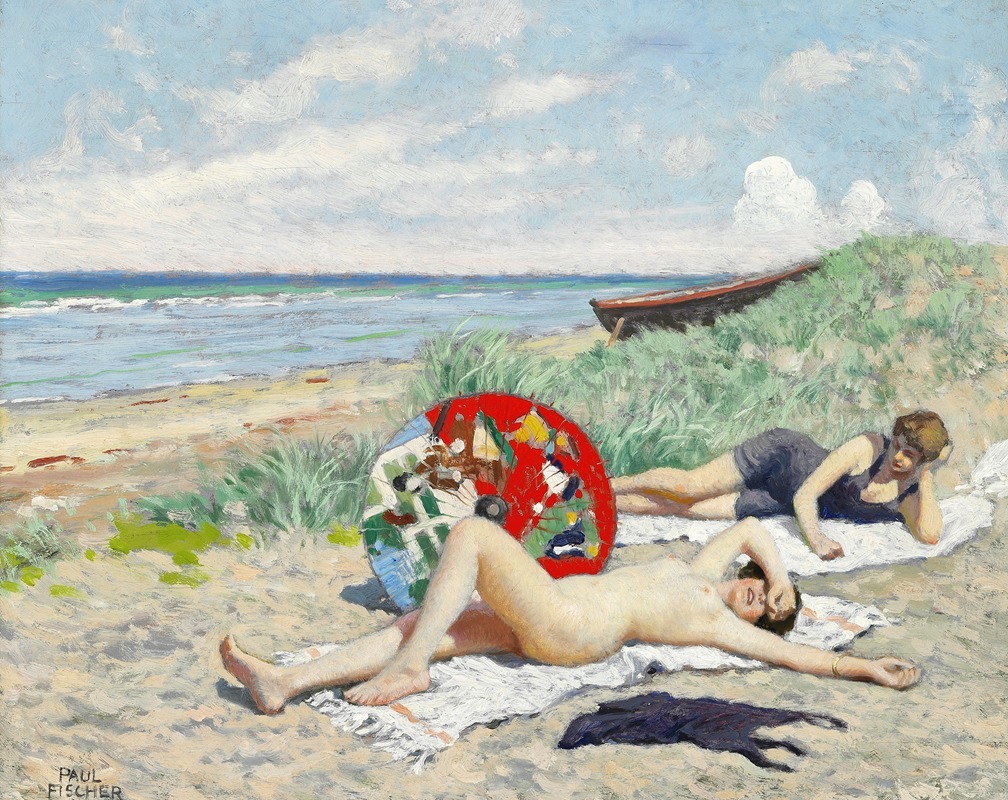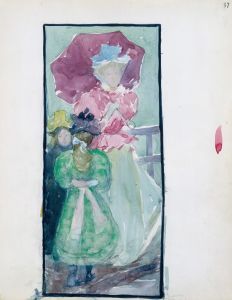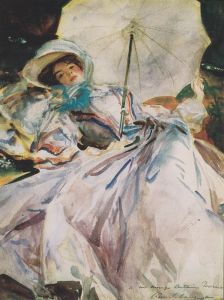
To piger og en japansk parasol på Hornbæk strand
A hand-painted replica of Paul Fischer’s masterpiece To piger og en japansk parasol på Hornbæk strand, meticulously crafted by professional artists to capture the true essence of the original. Each piece is created with museum-quality canvas and rare mineral pigments, carefully painted by experienced artists with delicate brushstrokes and rich, layered colors to perfectly recreate the texture of the original artwork. Unlike machine-printed reproductions, this hand-painted version brings the painting to life, infused with the artist’s emotions and skill in every stroke. Whether for personal collection or home decoration, it instantly elevates the artistic atmosphere of any space.
Paul Fischer was a Danish painter known for his depictions of everyday life in Denmark, particularly in Copenhagen. His work often captured the essence of Danish society during the late 19th and early 20th centuries. One of his notable paintings is "To piger og en japansk parasol på Hornbæk strand," which translates to "Two Girls and a Japanese Parasol on Hornbæk Beach."
This painting is a fine example of Fischer's ability to portray leisure and the leisurely activities of the Danish bourgeoisie. Hornbæk Beach, located on the northern coast of Zealand, Denmark, was a popular seaside resort during Fischer's time. It attracted many visitors who sought relaxation and recreation by the sea, making it a fitting subject for Fischer's work.
In "To piger og en japansk parasol på Hornbæk strand," Fischer captures a serene and picturesque scene. The painting depicts two young women enjoying a day at the beach, shaded by a Japanese parasol. The use of a parasol, particularly one of Japanese design, reflects the influence of Japonism, a trend in Western art that was inspired by Japanese art and design. This influence was prevalent in Europe during the late 19th century and is evident in Fischer's choice of accessories in this painting.
Fischer's style is characterized by his attention to detail and his ability to convey the atmosphere of the scene. In this painting, he uses light and color to create a sense of warmth and tranquility. The soft hues of the sand and sea, combined with the gentle shading provided by the parasol, evoke a peaceful summer day. The attire of the women, typical of the fashion of the time, adds to the historical context of the painting, providing insight into the clothing and social customs of the era.
The composition of the painting is balanced, with the two figures positioned in a way that draws the viewer's eye across the canvas. Fischer's skillful use of perspective and proportion ensures that the viewer feels a part of the scene, almost as if they are standing on the beach alongside the two women.
Paul Fischer's work, including "To piger og en japansk parasol på Hornbæk strand," is celebrated for its ability to capture the essence of Danish life and culture during a time of significant social and economic change. His paintings serve as a historical record, offering a glimpse into the leisure activities and societal norms of his time.
Fischer's contribution to Danish art is significant, and his works continue to be appreciated for their historical and artistic value. "To piger og en japansk parasol på Hornbæk strand" remains a testament to his talent in portraying the simple yet profound moments of everyday life, making it a cherished piece in the canon of Danish art.


















